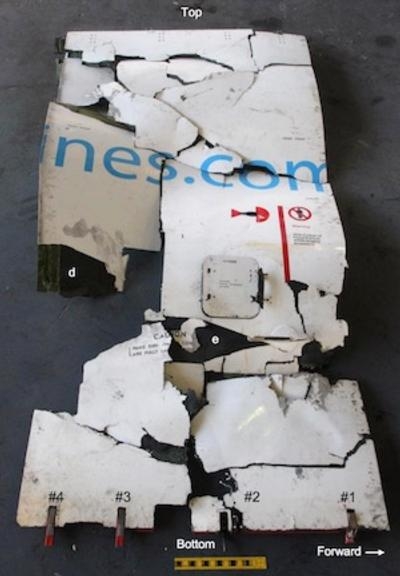Airplane Bound For Aruba Returned To Miami Airport
The NTSB has released a probable cause report stemming from an incident in which an A320 in route from Miami to Aruba lost a portion of an engine cowling shortly after takeoff.

According to the NTSB, on September 19, 2016, at approximately 0824 EDT, an Aruba Airlines Airbus A320-200, flight AG-820, from Miami International Airport (KMIA), Miami, FL (USA), to Queen Beatrix International Airport (AUA), Oranjestad, Aruba (Aruba), powered by two International Aero Engines (IAE) V2527 turbofan engines experienced a separation of the outboard fan cowl from the right-hand engine during takeoff. The flight crew was unaware of any anomalies until a passenger alerted the cabin crew of what he saw and the cabin crew relayed the message to the flight crew.
The flight crew leveled off at FL220 to assess the damage to the airplane. The crew was not sure if the panel had detached completely or was not visible from inside the airplane. All systems appeared normal in the cockpit but as a precaution the crew elected to return to Miami. The flight had an uneventful landing on runway 09 at KMIA about 40 minutes after departure. The incident flight was 14 Code of Federal Regulations (CFR) Part 129 Foreign Passenger Air Carrier from Miami to Aruba. There were no injuries. The aircraft sustained damage to the engine, engine pylon, right main landing gear, right main landing gear door and right fuselage.
The night prior to the incident the airplane was in maintenance where mechanics were completing a routine weekly check. Part of the weekly check was to open the fan cowl doors to inspect the IDG. Following the maintenance check, the cowl doors were closed and latched. Because the gate area where the maintenance was being performed was dark, the mechanic who completed the work used a flashlight to verify the latches were flush and made sure he heard a click.
A second mechanic who was assisting, also verified that the latches were flush but did not use a flashlight; he stated in a post-incident interview that he could see they were flush. The task was then signed off in the logbook as complete but did not specify that the cowls had been opened and closed. The morning of the incident, about 0430, the supervisor in charge of maintenance for Aruba Airlines performed a walkaround (although not required) using a flashlight and did not notice anything unusual about the cowl.
According to the Aruba Airlines A318/A319/A320/A321 Flight Crew Operating Manual, section "Procedures – Normal – Standard Operating Procedures – Exterior Walkaround," the fan cowl doors were to be checked that they were "closed/latched." The first officer conducted an exterior walkaround prior to departure and did not notice any abnormalities. He stated that to check the cowl he bent down and checked that it was flush and latched.
The examination of the No. 2 Engine Fan Cowl Components showed no evidence of preexisting damage on the latches/cowls prior to the event. Further, there was no evidence of latch design failures due to the previous nights routine maintenance work. Manufactures and Regulatory Agencies have released Service Bulletins/Regulatory Actions to prevent further loss of Fan Cowl Doors. At the time of the incident, Aruba Airlines had not incorporated (due to time in service) any of the modifications proposed by the Manufacturer/Regulatory Agencies.
The NTSB determined the probable cause of this incident to be the incorrect latching of the #2 Engine Fan Cowl following a routine maintenance check that resulted in separation of the cowl during takeoff.
(Image from NTSB incident docket)
 ANN's Daily Aero-Term (04.20.24): Light Gun
ANN's Daily Aero-Term (04.20.24): Light Gun Aero-News: Quote of the Day (04.20.24)
Aero-News: Quote of the Day (04.20.24) ANN's Daily Aero-Linx (04.21.24)
ANN's Daily Aero-Linx (04.21.24) Aero-News: Quote of the Day (04.21.24)
Aero-News: Quote of the Day (04.21.24) ANN's Daily Aero-Term (04.21.24): Aircraft Conflict
ANN's Daily Aero-Term (04.21.24): Aircraft Conflict



